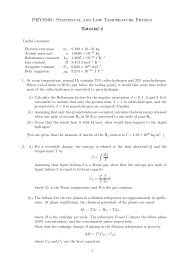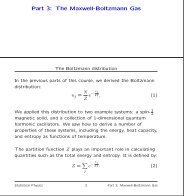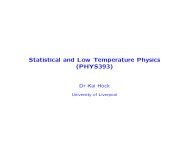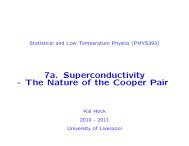7. Superconductivity - University of Liverpool
7. Superconductivity - University of Liverpool
7. Superconductivity - University of Liverpool
You also want an ePaper? Increase the reach of your titles
YUMPU automatically turns print PDFs into web optimized ePapers that Google loves.
Meissner effect.<br />
According to Faraday’s law, a change in magnetic flux is<br />
required before a current can be induced.<br />
For a macroscopic wavefunction, the very presence <strong>of</strong> the flux<br />
produces the current. No change in flux is needed!<br />
Let us look at the case <strong>of</strong> transition to the superconducting<br />
state again. Previously, we have not been able to explain the<br />
expulsion <strong>of</strong> the field using Faraday’s law.<br />
We can now explain this assuming that a macroscopic<br />
wavefunction appears when the metal becomes<br />
superconducting, If there is a magnetic field in the metal, it<br />
would produce a current. This current would in turn produce a<br />
flux.<br />
A more detailed reasoning would show that this wavefunction<br />
flux is in the opposite direction to the incoming flux.<br />
<strong>Superconductivity</strong> 22








